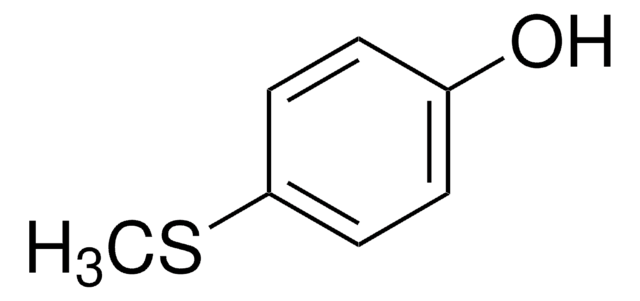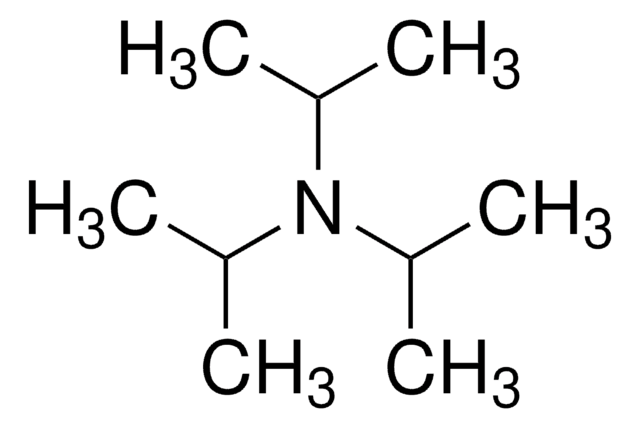310190
Tetraphenylbiphosphine
Synonym(s):
Tetraphenyldiphosphane
About This Item
Recommended Products
form
powder
reaction suitability
reaction type: Buchwald-Hartwig Cross Coupling Reaction
reaction type: Heck Reaction
reaction type: Hiyama Coupling
reaction type: Negishi Coupling
reaction type: Sonogashira Coupling
reaction type: Stille Coupling
reaction type: Suzuki-Miyaura Coupling
reagent type: ligand
bp
258-260 °C/1 mmHg (lit.)
mp
120-122 °C (sealed tube) (lit.)
functional group
phosphine
SMILES string
c1ccc(cc1)P(P(c2ccccc2)c3ccccc3)c4ccccc4
InChI
1S/C24H20P2/c1-5-13-21(14-6-1)25(22-15-7-2-8-16-22)26(23-17-9-3-10-18-23)24-19-11-4-12-20-24/h1-20H
InChI key
DAPZRBJQPPDZGH-UHFFFAOYSA-N
Application
- Selective formation of unsaturated amino acids
- Hydrogenation reactions
Initiator in catalytic polymerization reactions
Cocatalyst for rhodium-catalyzed hydroformylation
Signal Word
Danger
Hazard Statements
Precautionary Statements
Hazard Classifications
Pyr. Sol. 1
Storage Class Code
4.2 - Pyrophoric and self-heating hazardous materials
WGK
WGK 3
Flash Point(F)
Not applicable
Flash Point(C)
Not applicable
Personal Protective Equipment
Certificates of Analysis (COA)
Search for Certificates of Analysis (COA) by entering the products Lot/Batch Number. Lot and Batch Numbers can be found on a product’s label following the words ‘Lot’ or ‘Batch’.
Already Own This Product?
Find documentation for the products that you have recently purchased in the Document Library.
Our team of scientists has experience in all areas of research including Life Science, Material Science, Chemical Synthesis, Chromatography, Analytical and many others.
Contact Technical Service![1-[N,N-Bis(2-hydroxyethyl)amino]-2-propanol 94%](/deepweb/assets/sigmaaldrich/product/structures/219/539/52108f19-e9a0-4987-b605-9969a5cc720d/640/52108f19-e9a0-4987-b605-9969a5cc720d.png)









